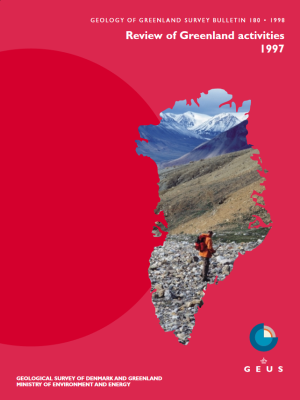Late Cenozoic wood from Washington Land, North Greenland
DOI:
https://doi.org/10.34194/ggub.v180.5100Abstract
The arctic regions are north of the tree line, but nevertheless wood is quite plentiful. Most of this wood in Greenland is driftwood that has floated across the Arctic Ocean, to be eventually deposited on beaches. Following previous deglaciations and isostatic rebound, raised beaches are common, and driftwood may be common below the marine limit. Most driftwood is of postglacial age, but pre-Holocene driftwood has been reported from Greenland and elsewhere in the Arctic.
Some of the pre-Holocene wood derives from trees that grew in the Arctic in the past, when climates were warmer than at the present. Best known are the Late Cretaceous and Early Tertiary diverse floras that comprise many warmth-demanding species including vines, but the wood from these time periods is more or less fossilised. Trees also grew in the Arctic much later, and some of this wood is remarkably well preserved and looks much like postglacial driftwood. Thus when the geologist Lauge Koch observed tree trunks up to 165 m above sea level in the hills of the Kap København area in eastern Peary Land (Fig. 1), he interpreted this as postglacial driftwood (Koch 1926). However, the Kap København Formation is now dated to the PlioPleistocene (Bennike 1990). Although no trees have been found in growth position in the Kap København area, it is obvious that the trees grew locally, since leaves, needles, seeds and cones are common, and the rich fossil insect fauna also comprises numerous species that are dependent on trees (Böcher 1995). At two other sites in Peary Land concentrations of pre-Holocene wood are present, namely at Jørgen Brønlund Fjord and at Baggården. The occurrence at Jørgen Brønlund Fjord is situated below the marine limit, and the wood could be driftwood, but the concentration of wood fragments is more indicative of local tree growth (Bennike 1990). At Baggården, wood is found along the shore of the lake and along Sydpaselv that drains into Øvre Midsommersø (Bennike 1990; E. Knuth, National Museum, Copenhagen, archive). A few specimens from this locality archived in the National Museum in Copenhagen (NM VIII A 4512M) are small, abraded and fragmented pieces that do not show the size of the trees.
From Washington Land, pre-Holocene wood has previously been reported from the pre-glacial Bjørnehiet Formation (GGU 211926 and 211929; Jepsen 1982), and from a gravel river bed north of Humboldt Gletscher (GGU 206054). At the latter site many wood pieces were reported at an altitude of 245–260 m above sea level (Blake 1987), which is far above the marine limit of the area. Weidick (1978) suggested that the wood is interglacial driftwood that was redeposited by glaciers, but again the concentration of wood fragments is hard to understand, so a source from local tree growth seems more likely. The wood in North Greenland bears resemblance to wood from the Beaufort Formation and related deposits in northern Canada (e.g., Matthews & Ovenden 1990; Matthews et al. 1990; Fyles et al. 1994). The Beaufort Formation is assigned to the Miocene and Pliocene. On western Ellesmere Island (Fig. 2), so-called high-level alluvium is fairly widespread. A notable occurrence here, at an elevation of approximately 400 m, is the Mid or Late Pliocene Beaver Pond peat that also contains a rich mammalian fauna, including the extinct rabbit Hypolagus that is also present in the Kap København Formation (Matthews & Ovenden 1990; C.R. Harington, personal communication 1994). During field work in Washington Land in the summer of 1997 a new locality with abundant wood was located along the river that drains into Aleqatsiaq Fjord, at c. 80°31.9′N, 65°25′W (Fig. 3), and the purpose of this note is to describe some samples of wood that were brought to Copenhagen.
Downloads
Published
Issue
Section
License
This article is distributed under a CC-BY 4.0 licence, permitting free redistribution and reproduction for any purpose, even commercial, provided proper citation of the original work. Author(s) retain copyright over the article contents.


